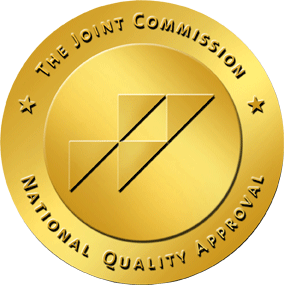The signs and symptoms of PTSD in women can look different from what you might expect. If you’re a woman who has gone through something treacherous or painful, you might notice changes in how you think, feel, or react.
Learn how PTSD shows up in women, what to watch for, and why getting the right support can help you start to heal.

How PTSD Manifests Differently in Women
About 1 in 10 women will have PTSD at some point in their lives. That’s twice as common as in men, where about 1 in 20 to 1 in 18 will get it.1 This difference isn’t just about the types of trauma experienced; it’s also about how women’s bodies and minds respond to stress.
Emotional and Physical Responses
Women with PTSD often experience intense emotional symptoms like anxiety, sadness, and emotional numbness. They may also have physical symptoms such as sleep problems, fatigue, and heightened alertness. These symptoms can be more severe in women due to biological and hormonal factors.
Hormonal Influences
Hormones like estrogen can affect how women respond to stress. Fluctuations in these hormones may make women more sensitive to stress and more likely to develop PTSD after traumatic events. For instance, certain genetic factors related to estrogen have been linked to increased PTSD symptoms in women.2
Coping Strategies
Women often cope with stress by seeking social support and expressing emotions, which can be beneficial. However, if support isn’t available, these coping strategies might not be enough, leading to prolonged PTSD symptoms. In contrast, men may use problem-solving approaches, which can sometimes be more effective in certain situations.
Early Life Experiences
Experiencing trauma during childhood, such as abuse or neglect, can increase the risk of developing PTSD later in life. Women are more likely than men to have experienced certain types of childhood trauma, which may contribute to higher PTSD rates among women.3
Brain Differences
Research shows that not only are girls more likely to face certain types of trauma, but their brains also react differently to it than boys’ brains.4 On top of that, girls are often raised to act in emotional and passive ways, which can make their mental health worse over time.5
Understanding these differences is key to providing effective support and treatment for women with PTSD.
Common Causes of PTSD in Women
Some of the most common causes of PTSD in women include:6
Sexual Assault
If you’ve been through sexual assault, it can leave deep emotional scars. This type of trauma is, sadly, more common for women, and it’s one of the leading causes of PTSD in women. It can make you feel unsafe, ashamed, or fearful for a long time.
Stalking
Being stalked, when someone follows, watches, or harasses you repeatedly, can make you feel constantly afraid. Even if nothing physical happens, that ongoing fear can trigger PTSD.
Physical Violence or Intimate Partner Violence
If someone you love or live with has ever hurt you, that trauma can stay with you. Women are more likely than men to experience violence from someone close to them, like a partner or spouse. That kind of betrayal and pain can be difficult to heal from.
Military Experience
Some women develop PTSD after serving in the military. This might be because of combat, but it can also come from sexual assault or harassment during their service. Both are sadly common and can leave lasting trauma.
Childhood Abuse or Neglect
If you were abused, hurt, or ignored as a child, that early trauma can shape how you see the world and affect how you respond to stress as an adult. Women who go through trauma at a younger age are especially at risk of developing PTSD later in life.
Why PTSD Might Last Longer for Women
For women, it may last longer or feel more intense because of a combination of these factors:
- Your biology: Hormones like estrogen may affect how you respond to stress.
- Your genes: Some people are born more sensitive to trauma.
- Your past: If you’ve been through more than one trauma, or if it started when you were young, you may feel the effects more strongly.
PTSD Symptoms in Women
To be diagnosed with PTSD, these symptoms usually need to last for at least one month. Here’s what to look for:
Reliving the Trauma (Reexperiencing)
You might feel like you’re going through the trauma all over again. This can happen through:
- Flashbacks (your brain plays the event like a movie)
- Nightmares or disturbing dreams
- Unwanted thoughts that won’t go away
- Physical signs like sweating, a racing heart, or panic when reminded of the event
Avoidance
You may try hard not to think about the trauma. You might:
- Stay away from people, places, or things that remind you of it
- Avoid talking about what happened
- Push away your feelings or memories
Being on Edge (Reactivity)
Your body might feel like it’s always on alert. You could:
- Get startled very easily
- Feel tense or “on edge”
- Have trouble sleeping or concentrating
- Get angry more often
- Do things that are risky or self-destructive
Negative Thoughts and Emotions (Mood Changes)
PTSD can affect how you think and feel every day. You might:
- Forget parts of what happened
- Feel bad about yourself or the world
- Blame yourself for the trauma
- Feel sad, numb, or empty
- Lose interest in things you used to enjoy
- Feel alone or disconnected from others
When you go through something traumatic, your brain can get stuck in a fear mode. Even when the danger is over, your body might still react like it’s happening all over again. That’s what PTSD is like. Something in your current life, like a sound, smell, place, or even a feeling, can remind you of the trauma, and suddenly you’re full of fear again, even if there’s no real danger.
Treatment Options for Women with PTSD
One of the most important things that can make a difference in your healing is having people around you who support and care for you. Support from friends, family, or even a therapist can help ease your symptoms.
Talking About What You’re Going Through Helps
Many women feel better when they have a safe place to express their emotions. Sometimes, just saying out loud what you’ve been through can help take away some of its power.
Therapy That Works
One kind of talk therapy that works well is called Cognitive-Behavioral Therapy (CBT). It helps you understand how your thoughts affect your feelings and actions. You’ll learn how to change negative thoughts, manage stress, and take back control of your life.
Other helpful therapies may include:
- Group therapy, where you connect with other women who understand what you’re going through
- Trauma-focused therapy, which gently helps you process painful memories
- Mindfulness and relaxation techniques, which help calm your mind and body
You Don’t Have to Do It Alone
Healing from PTSD takes time, but you don’t have to go through it by yourself. At South Coast Counseling, we understand what you’re going through, and we’re here to help. Our devoted team offers therapy that’s made to support women just like you, with a focus on healing, connection, and strength. Contact us today for next steps in your journey.

Sources:
- Olff, M. (2017). Sex and gender differences in post-traumatic stress disorder: an update. European Journal of Psychotraumatology, 8(sup4). https://doi.org/10.1080/20008198.2017.1351204
- Katrinli, S., & Michopoulos, V. (2024). Decoding Sex Differences in PTSD Heritability: A Comprehensive Twin Study. American Journal of Psychiatry, 181(8), 690–692. https://doi.org/10.1176/appi.ajp.20240496
- Machtinger, E. L., Cuca, Y. P., Khanna, N., Rose, C. D., & Kimberg, L. S. (2015). From Treatment to Healing: The Promise of Trauma-Informed Primary Care. Women’s Health Issues, 25(3), 193–197. https://doi.org/10.1016/j.whi.2015.03.008
- Klabunde, M., Weems, C. F., Raman, M., & Carrion, V. G. (2016). The moderating effects of sex on insula subdivision structure in youth with posttraumatic stress symptoms. Depression and Anxiety, 34(1), 51–58. https://doi.org/10.1002/da.22577
- Yuan, J., Li, H., Long, Q., Yang, J., Lee, T. M. C., & Zhang, D. (2020). Gender Role, But Not Sex, Shapes Humans’ Susceptibility to Emotion. Neuroscience Bulletin, 37(2), 201–216. https://doi.org/10.1007/s12264-020-00588-2
- Shansky, R. M. (2015). Sex differences in PTSD resilience and susceptibility: Challenges for animal models of fear learning. Neurobiology of Stress, 1, 60–65. https://doi.org/10.1016/j.ynstr.2014.09.005









